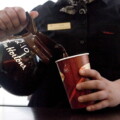Less than half of one percent of the total permanent residents admitted to Canada since 2015 have been through the federal government’s Federal Skilled Trades Program.
According to Immigration, Refugees and Citizenship Canada’s (IRCC) quarterly update of permanent residents admitted to Canada, between 2015 and 2023, the total number of people admitted to the country based on their skilled trade qualifications was just 9,924.
The Federal Skilled Trades Program is part of the federal government's Express Entry Program. It is the only federal economic immigration program that specifically prioritises immigration to Canada for workers in trades occupations. It allows qualified tradespersons from around the world to immigrate to Canada permanently.
Permanent resident applicants can apply through the Federal Skilled Trades Program if they have at least two years experience working in a skilled trade, in Canada or abroad, defined by the “National Occupational Classification.” They must also have a job offer for full-time Canadian employment or a skilled trade certificate issued by a provincial or the federal government.
From 2015 to 2023, Canada admitted 2.9 million permanent residents in total. These included everyone admitted through all of Canada’s permanent resident programs, such as those for economic migrants, sponsored family members, and resettled refugees, an IRCC spokesperson told The Hub.
However, of this newcomer population, only 9,924 were admitted through the government’s Federal Skilled Trade Program. This equals less than half of one percent of the total permanent residents admitted.
Defending the government’s efforts, the IRCC official said that between January 2019 and March 2024, Canada admitted more than 50,000 permanent residents with “experience in construction trades occupations” through the Federal Skilled Trades Program and other economic permanent resident streams including the Canadian Experience Class, Provincial Nominee Program, the Atlantic Immigration Program, and the 2021 Temporary Resident to Permanent Resident Pathway.
The IRCC could not immediately provide statistics for how many permanent residents within each of those four streams (which are outside of the Federal Skilled Trades Program) had skilled trades or how many permanent residents in total were admitted through them.
In any case, 50,000 is 2.7 percent of the 1.8 million permanent residents who arrived in Canada between 2019 and 2023. These individuals do not need to confirm they will work in a skilled trade occupation or that they have recent skilled trade experience to gain entry.
The Hub recently reported on Canada’s shortage of skilled trades workers, with the manufacturing sector shortages estimated to have cost the economy $13 billion in 2022.
Canada has recently put emphasis on providing permanent residency to the highly educated, while “skilled trades have really been dropped” among the government’s permanent residency priorities, according to an HR manager who participated in a 2023 study on Canada’s express entry system and labour market.
Over half (60 percent) of immigrants arriving in Canada in the last five years have a bachelor's degree or above, compared with just 30 percent of the Canadian-born population, according to The Hub’s most recent DeepDive.
About 40 percent of new permanent residents are selected on economic criteria. However, most are either family members of economic applicants (20 percent), family members of those who have already immigrated to Canada (20 percent), or refugees (15 percent).
“By focusing on high skilled immigrants [in granting permanent residency],… we’re neglecting an important and critical part of our economy,” said an immigration lawyer in the same study.








